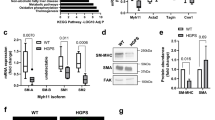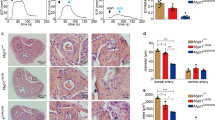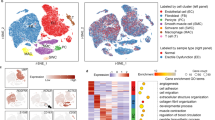Abstract
The molecular interaction between smooth muscle (SM) myosin and actin in the corpus cavernosum (CC) determines the erectile state of the penis. A key mechanism regulating this interaction and subsequent development and maintenance of force is alternative splicing of SM myosin heavy chain (MHC) and 17 kDa essential SM myosin light chain (MLC) pre-mRNAs. Our aim was to examine the relative SM myosin isoform composition in human CC. Tissue samples were obtained from 18 patients with erectile dysfunction (ED), Peyronie's disease, or both. One specimen was obtained during a transgender operation. Patients then were stratified according to presence of diabetes mellitus, hypertension, ED, or Peyronie's disease, as well as failure of phosphodiesterase-5 (PDE5) inhibitors and history of previous pelvic or penile surgeries, radiation, or both. Our results revealed that all human CC samples expressed only the SM-A isoform. There was a predominance of SM2 isoform mRNA relative to SM1 across all samples, with a mean of 63.8%, which correlated with protein analysis by gel electrophoresis. A statistically significant difference was found between patients who had undergone previous pelvic surgery, radiation, or both and those who did not. The ratio of LC17b to LC17a was approximately 1:1 for all patients, with a mean of 48.9% LC17b. Statistical difference was seen in the relative ratio of LC17b to LC17a among the group who failed conservative therapy with PDE5 inhibitors compared with all others. In conclusion, we determined the SM myosin isoform composition of human CC and present for the first time differences in relative myosin isoform expression among patients with several risk factors contributing to their cause of ED. Our data reflect the fact that alternative splicing events in the MHC and 17 kDa MLC pre-mRNA may be a possible molecular mechanism involved in the altered contractility of the CCSM in patients with ED.
This is a preview of subscription content, access via your institution
Access options
Subscribe to this journal
Receive 8 print issues and online access
$259.00 per year
only $32.38 per issue
Buy this article
- Purchase on Springer Link
- Instant access to full article PDF
Prices may be subject to local taxes which are calculated during checkout





Similar content being viewed by others
Accession codes
References
Ayta IA, McKinlay JB, Krane RJ . The likely worldwide increase in erectile dysfunction between 1995 and 2025 and some possible policy consequences. BJU Int 1999; 84: 50–56.
Wyllie MG . The underlying pathophysiology and causes of erectile dysfunction. Clin Cornerstone 2005; 7: 19–27.
Montorsi P, Ravagnani PM, Galli S, Rotatori F, Briganti A, Salonia A et al. Common grounds for erectile dysfunction and coronary artery disease. Curr Opin Urol 2004; 14: 361–365.
McVary KT, McKenna KE . The relationship between erectile dysfunction and lower urinary tract symptoms: epidemiological, clinical, and basic science evidence (review) (44 refs). Curr Urol Rep 2004; 5: 251–257.
DiSanto ME . Corpus cavernosum smooth muscle physiology: a role for sex hormones? J Androl 2003; 24: S6–S16.
Samuel M, Chowrashi PK, Pepe FA, Chacko S . Effects of phosphorylation, magnesium, and filament assembly on actin-activated ATPase of pig urinary bladder myosin. Biochemistry 1990; 29: 7124–7132.
Babu GJ, Loukianov E, Loukianova T, Pyne GJ, Huke S, Osol G et al. Loss of SM-B myosin affects muscle shortening velocity and maximal force development. Nat Cell Biol 2001; 3: 1025–1029.
Somlyo AV, Matthew JD, Wu X, Khromov AS, Somlyo AP . Regulation of the cross-bridge cycle: the effects of MgADP, LC17 isoforms and telokin. Acta Physiol Scand 1998; 164: 381–388.
Babij P, Kelly C, Periasamy M . Characterization of a mammalian smooth muscle myosin heavy-chain gene: complete nucleotide and protein coding sequence and analysis of the 5′ end of the gene. Proc Natl Acad Sci USA 1991; 88: 10676–10680.
Babij P, Periasamy M . Myosin heavy chain isoform diversity in smooth muscle is produced by differential RNA processing. J Mol Biol 1989; 210: 673–679.
Babij P . Tissue-specific and developmentally regulated alternative splicing of a visceral isoform of smooth muscle myosin heavy chain. Nucleic Acids Res 1993; 21: 1467–1471.
DiSanto ME, Cox RH, Wang Z, Chacko S . NH2-terminal-inserted myosin II heavy chain is expressed in smooth muscle of small muscular arteries. Am J Physiol 1997; 272: C1532–C1542.
Kelley CA, Takahashi M, Yu JH, Adelstein RS . An insert of seven amino acids confers functional differences between smooth muscle myosins from the intestines and vasculature. J Biol Chem 1993; 268: 12848–12854.
DiSanto ME, Stein R, Chang S, Hypolite JA, Zheng Y, Zderic SA et al. Alteration in expression of myosin isoforms in detrusor smooth muscle following bladder outlet obstruction. Am J Physiol 2003; 285: C1397–C1410.
Rovner AS, Fagnant PM, Lowey S, Trybus KM . The carboxyl-terminal isoforms of smooth muscle myosin heavy chain determine thick filament assembly properties. J Cell Biol 2002; 156: 113–123.
Kelley CA, Sellers JR, Goldsmith PK, Adelstein RS . Smooth muscle myosin is composed of homodimeric heavy chains. J Biol Chem 1992; 267: 2127–2130.
Meer DP, Eddinger TJ . Expression of smooth muscle myosin heavy chains and unloaded shortening in single smooth muscle cells. Am J Physiol 1997; 273: C1259–C1266.
Wang ZE, Gopalakurup SK, Levin RM, Chacko S . Expression of smooth muscle myosin isoforms in urinary bladder smooth muscle during hypertrophy and regression. Lab Invest 1995; 73: 244–251.
Nabeshima Y, Nonomura Y, Fujii-Kuriyama Y . Nonmuscle and smooth muscle myosin light chain MRNAs are generated from a single gene by the tissue-specific alternative RNA splicing. J Biol Chem 1987; 262: 10608–10612.
Lenz S, Lohse P, Seidel U, Arnold HH . The alkali light chains of human smooth and nonmuscle myosins are encoded by a single gene. Tissue-specific expression by alternative splicing pathways. J Biol Chem 1989; 264: 9009–9015.
Malmqvist U, Arner A . Correlation between isoform composition of the 17 kDa myosin light chain and maximal shortening velocity in smooth muscle. Pflugers Arch 1991; 418: 523–530.
Siegman MJ, Butler TM, Mooers SU, TrinkleMulcahy L, Narayan S, Adam L et al. Colonic smooth muscle: contractile proteins, shortening velocity, and regulation. Am J Physiol 1997; 35: G1571–G1580.
Mitani Y, Ueda M, Komatsu R, Maruyama K, Nagai R, Matsumura M et al. Vascular smooth muscle cell phenotypes in primary pulmonary hypertension. Eur Respir J 2001; 17: 316–320.
DiSanto ME, Wang Z, Menon C, Zheng Y, Chacko T, Hypolite J et al. Expression of myosin isoforms in smooth muscle cells in the corpus cavernosum penis. Am J Physiol 1998; 275: C976–C987.
Chang S, Hypolite JA, Zderic SA, Wein AJ, Chacko S, DiSanto ME . Enhanced force generation by corpus cavernosum smooth muscle in rabbits with partial bladder outlet obstruction. J Urol 2002; 167: 2636–2644.
Szymanski PT, Chacko TK, Rovner AS, Goyal RK . Differences in contractile protein content and isoforms in phasic and tonic smooth muscles. Am J Physiol 1998; 44: C684–C692.
Lauzon AM, Tyska MJ, Rovner AS, Freyzon Y, Warshaw DM, Trybus KM . A 7-amino-acid insert in the heavy chain nucleotide binding loop alters the kinetics of smooth muscle myosin in the laser trap. J Muscle Res Cell Motil 1998; 19: 825–837.
Matthew JD, Khromov AS, Trybus KM, Somlyo AP, Somlyo AV . Myosin essential light chain isoforms modulate the velocity of shortening propelled by nonphosphorylated cross-bridges. J Biol Chem 1998; 273: 31289–31296.
Huang QQ, Fisher SA, Brozovich FV . Forced expression of essential myosin light chain isoforms demonstrates their role in smooth muscle force production. J Biol Chem 1999; 274: 35095–35098.
Arner A, Lofgren M, Morano I . Smooth, slow and smart muscle motors. J Muscle Res Cell Motil 2003; 24: 165–173.
Damon DH . Sympathetic innervation promotes vascular smooth muscle differentiation. Am J Physiol 2005; 288: H2785–H2791.
Acknowledgements
Study supported by Departmental Funds.
Author information
Authors and Affiliations
Corresponding author
Rights and permissions
About this article
Cite this article
Koi, P., Milhoua, P., Monrose, V. et al. Expression of myosin isoforms in the smooth muscle of human corpus cavernosum. Int J Impot Res 19, 62–68 (2007). https://doi.org/10.1038/sj.ijir.3901503
Received:
Revised:
Accepted:
Published:
Issue Date:
DOI: https://doi.org/10.1038/sj.ijir.3901503



